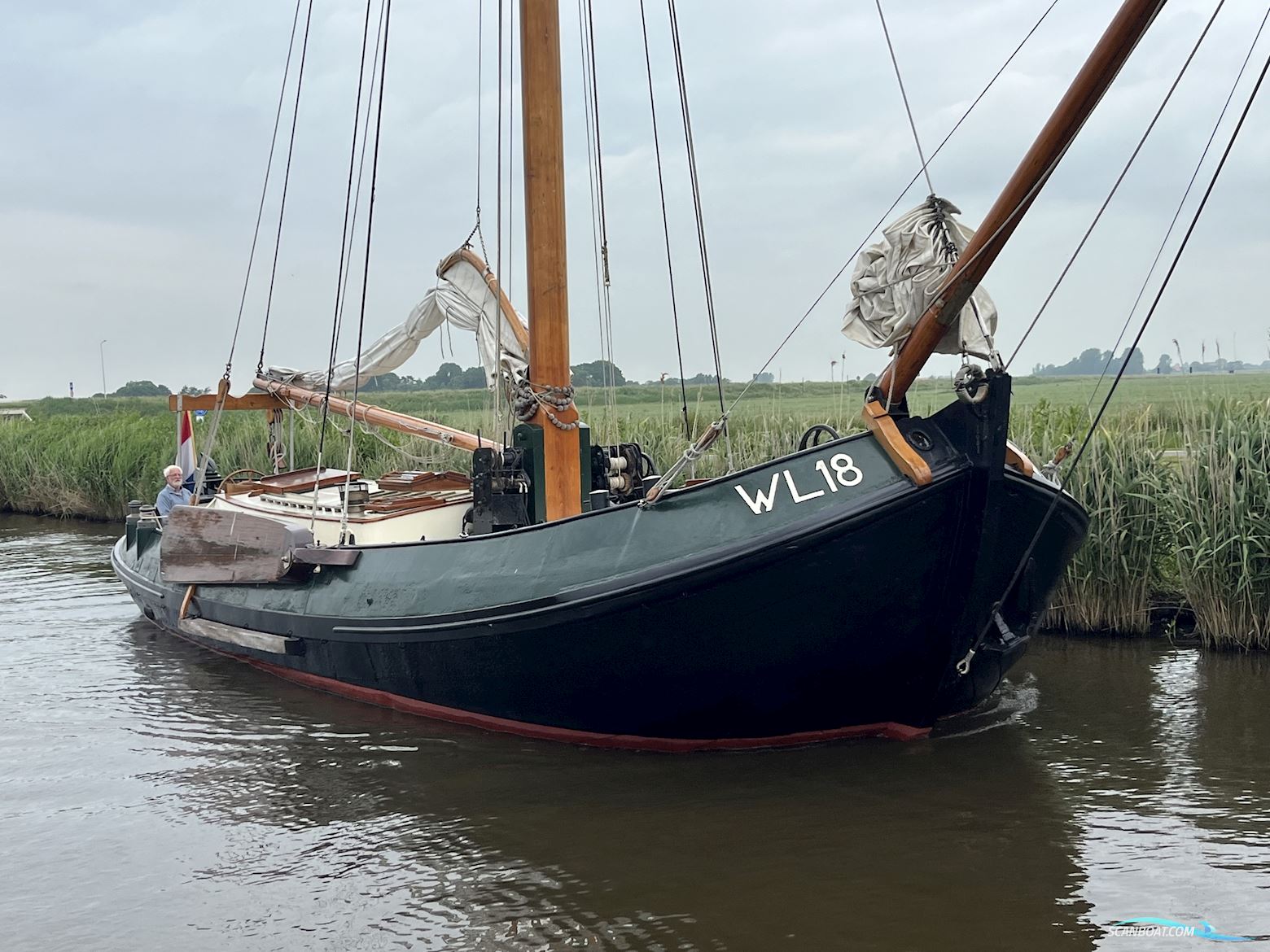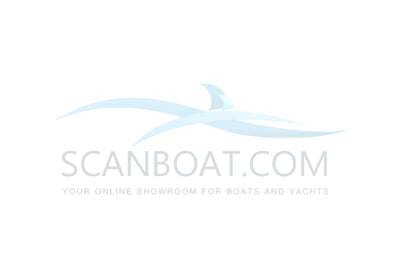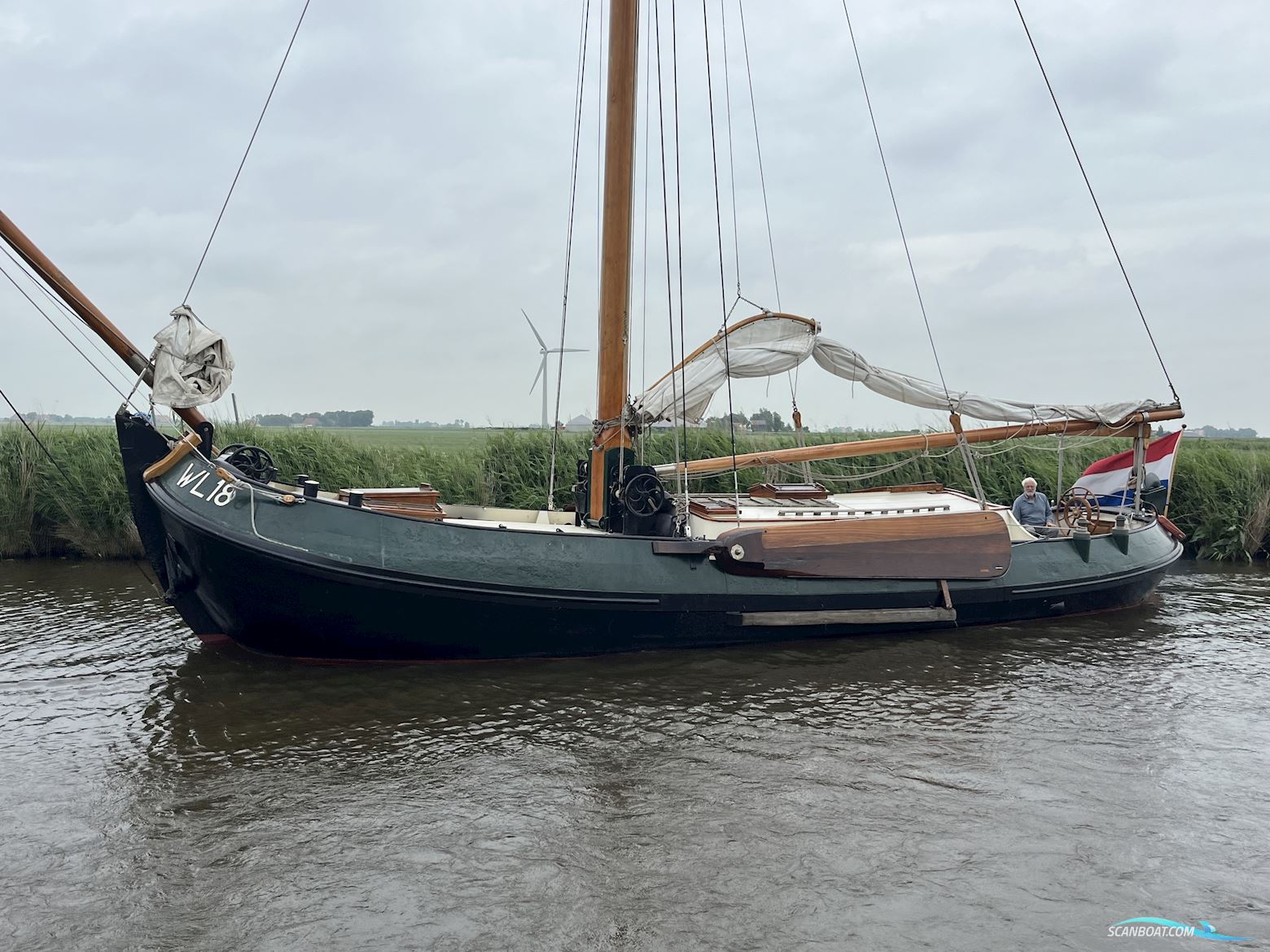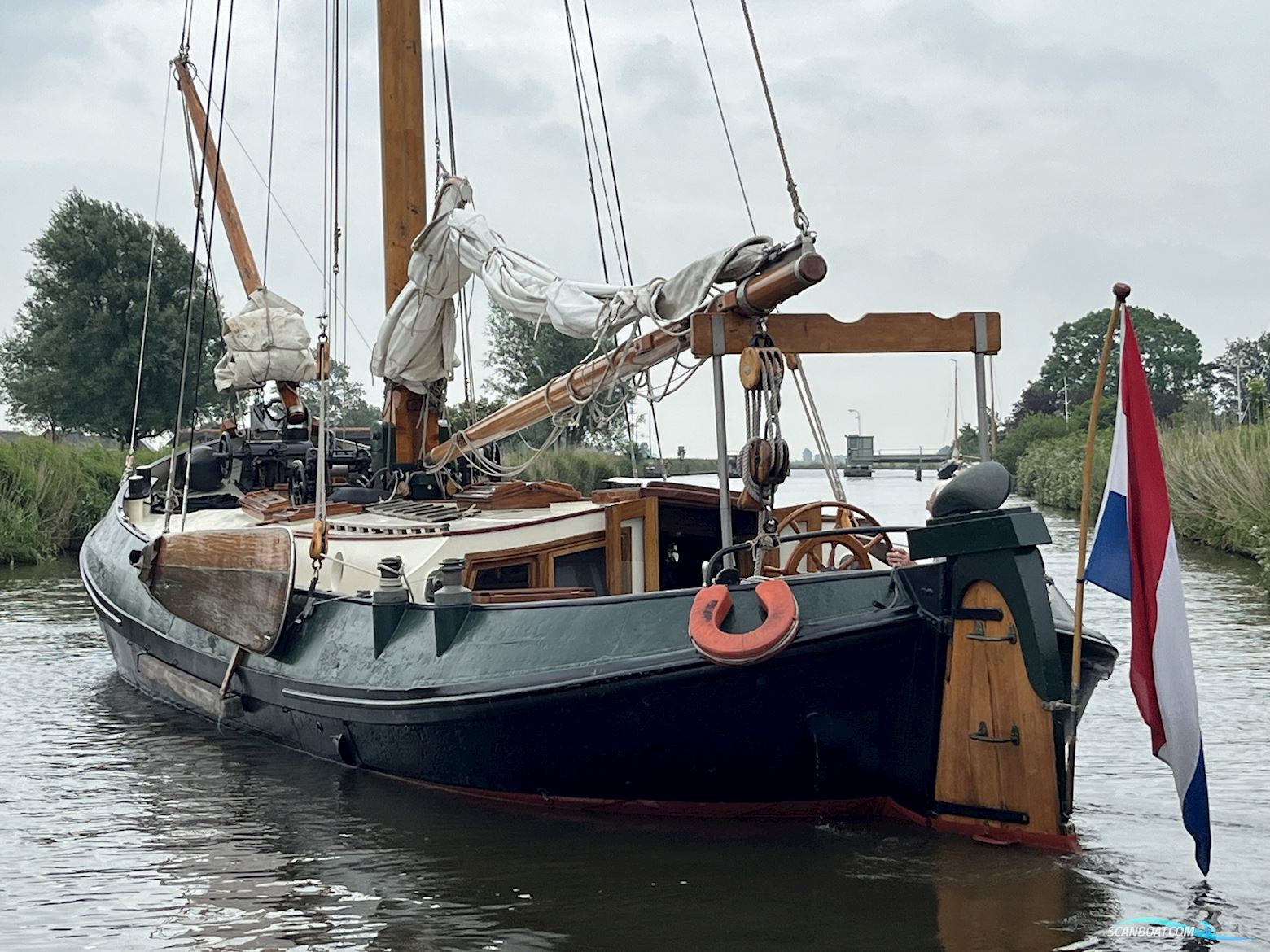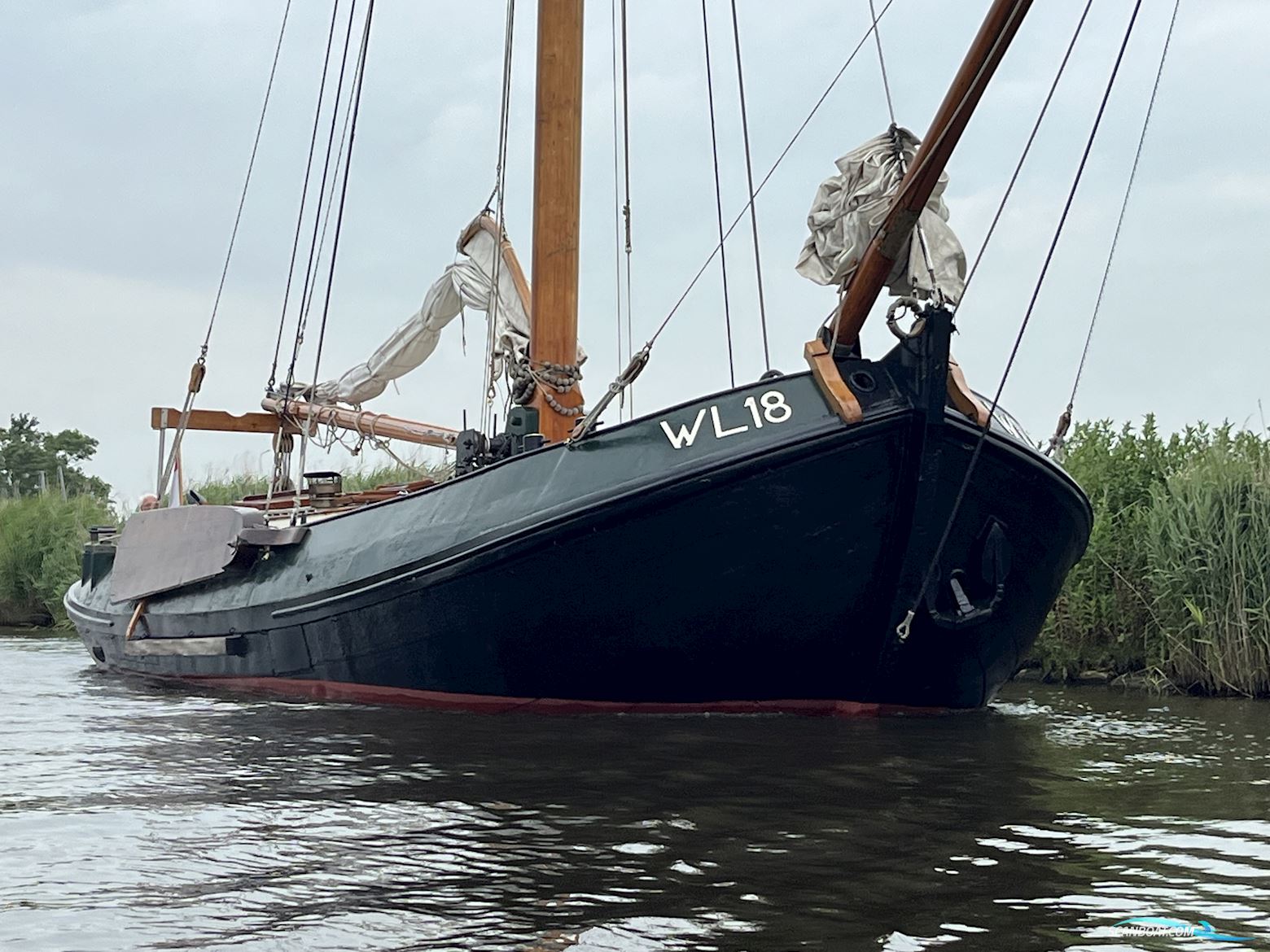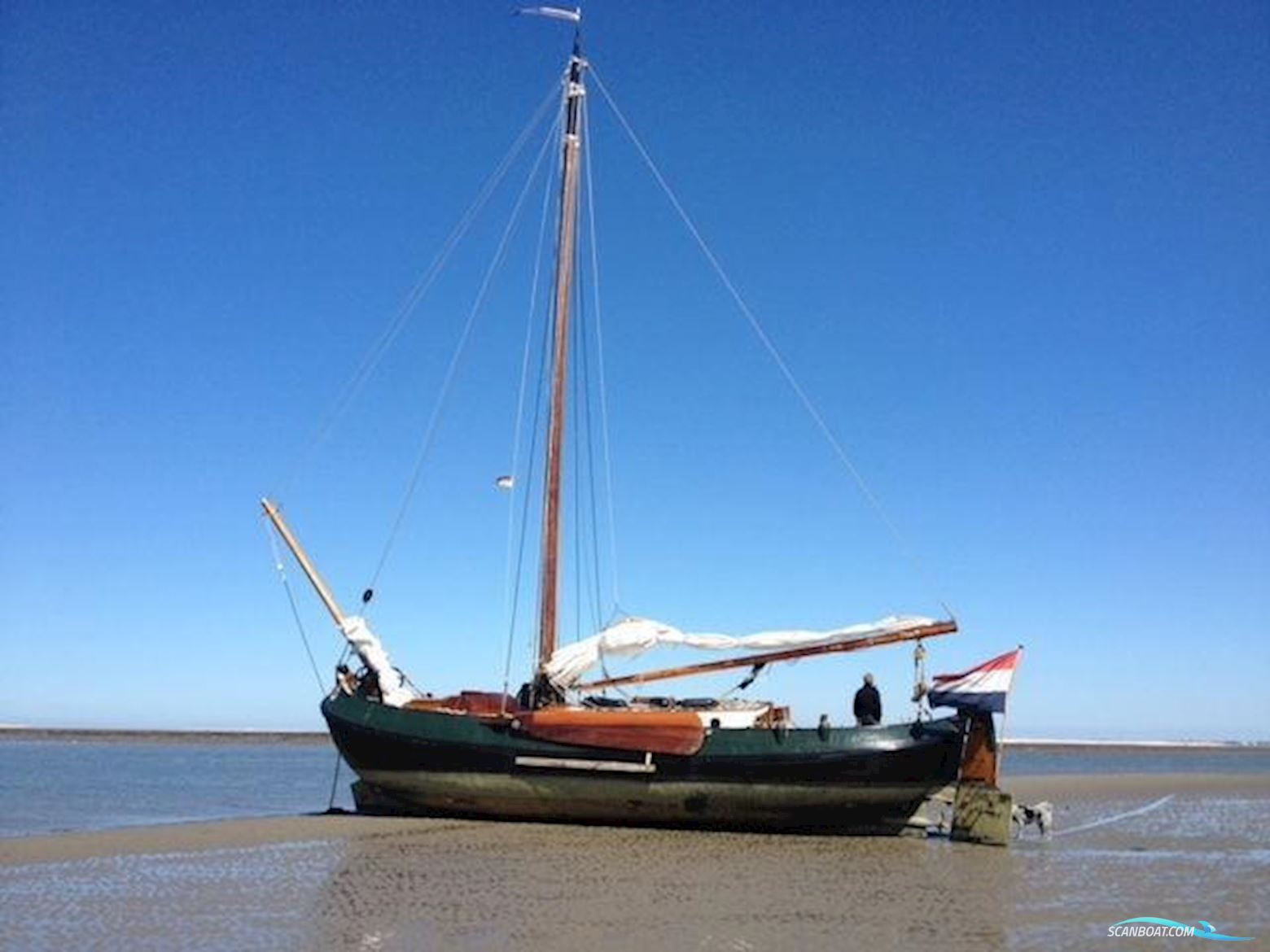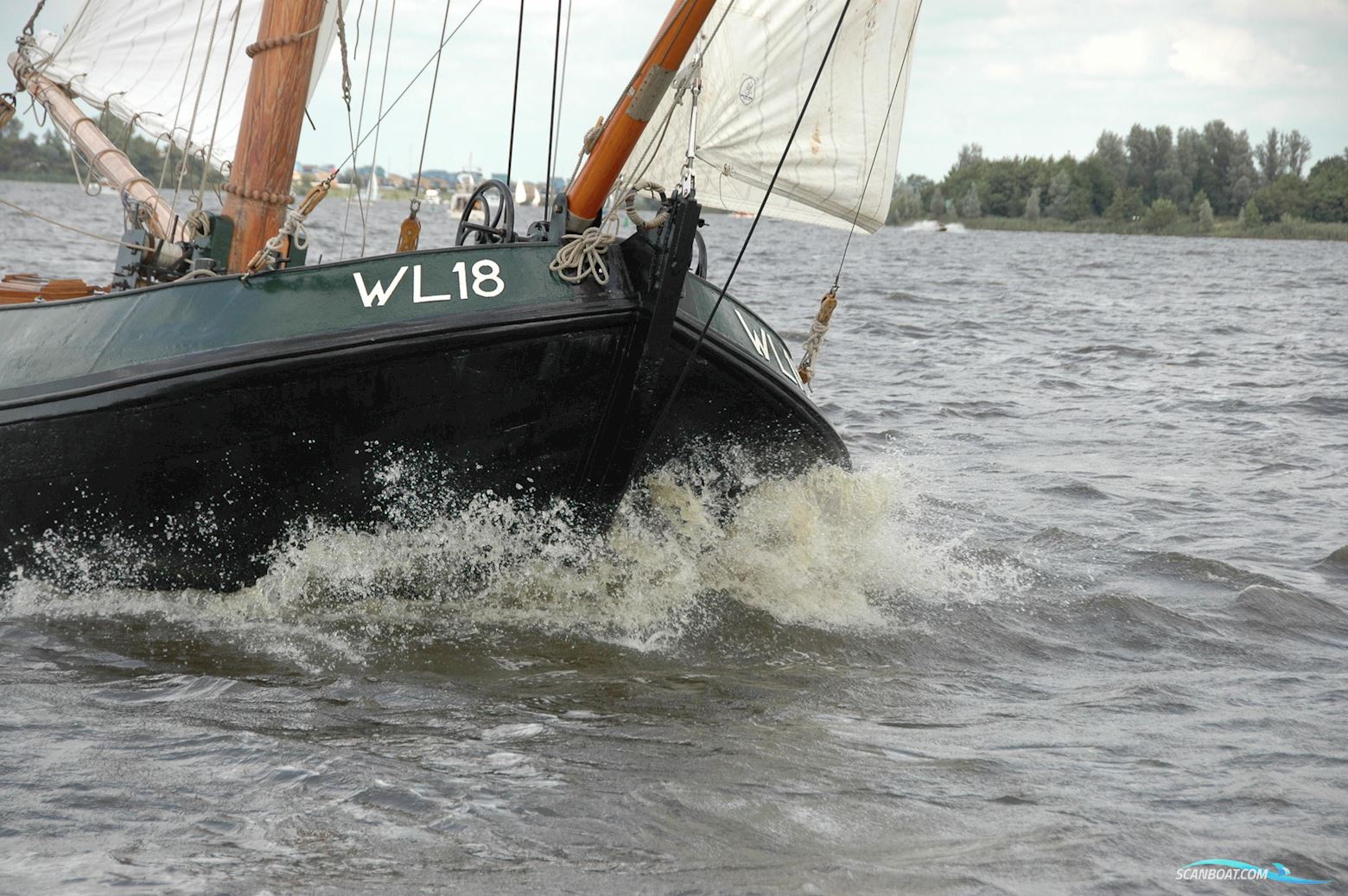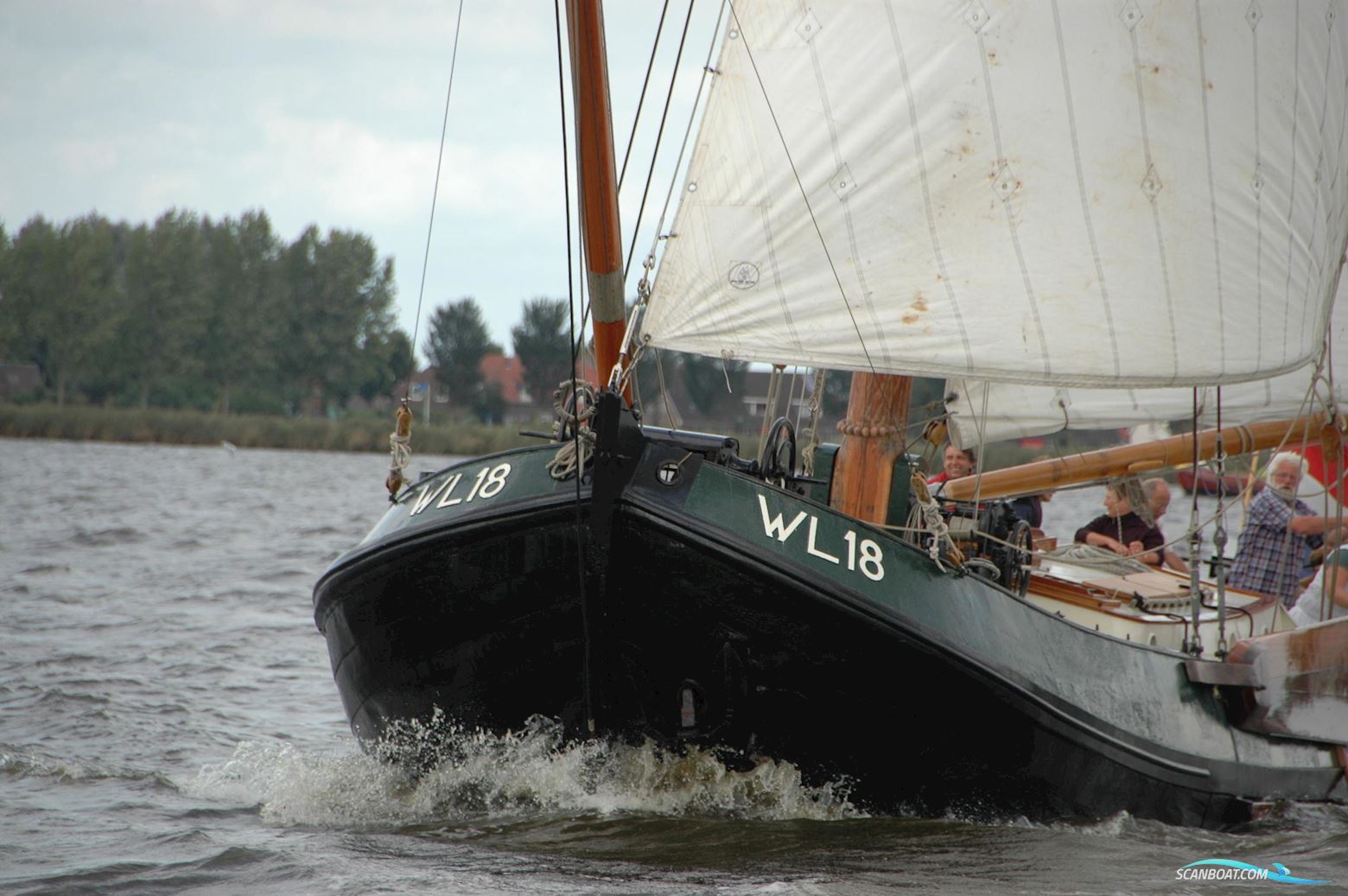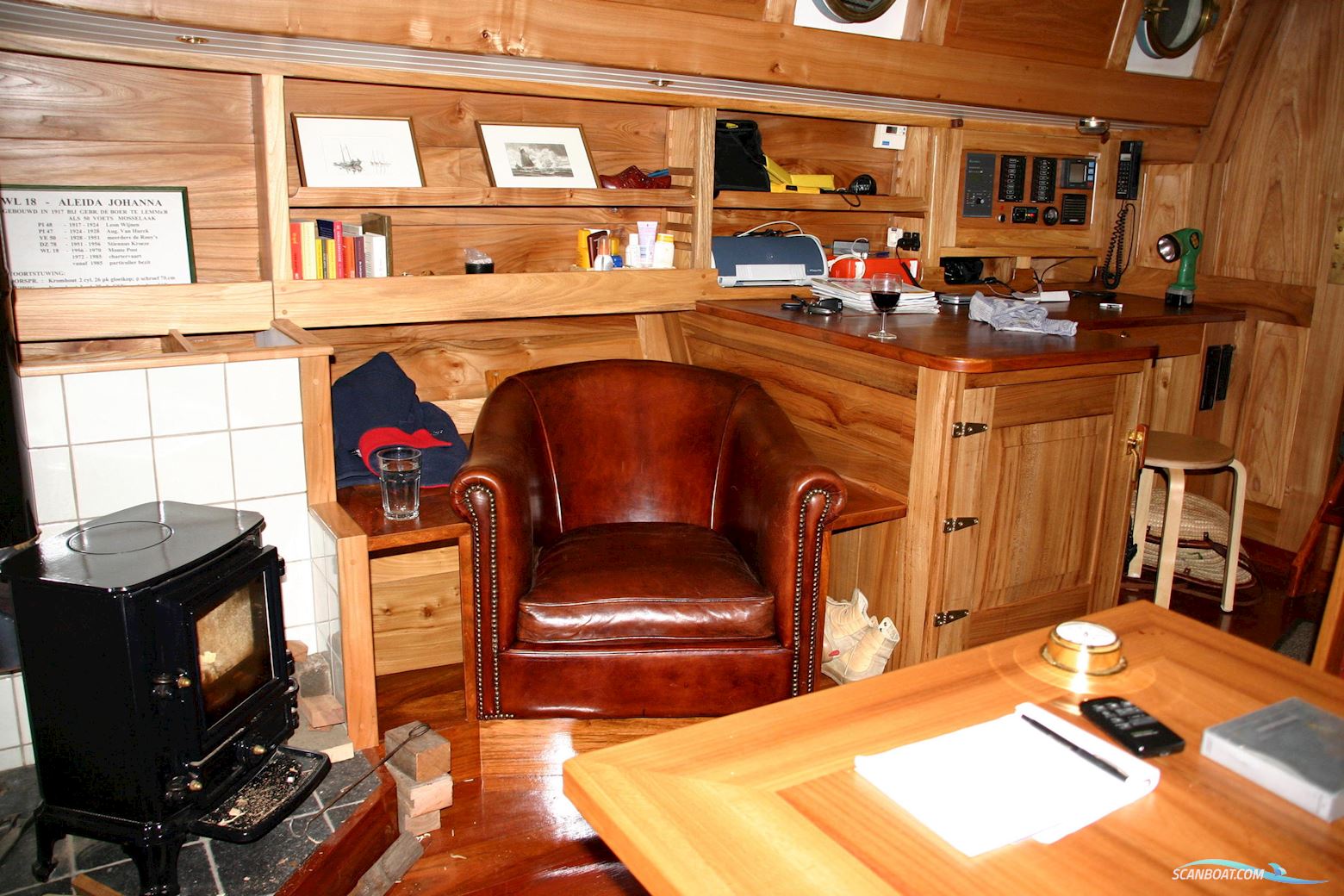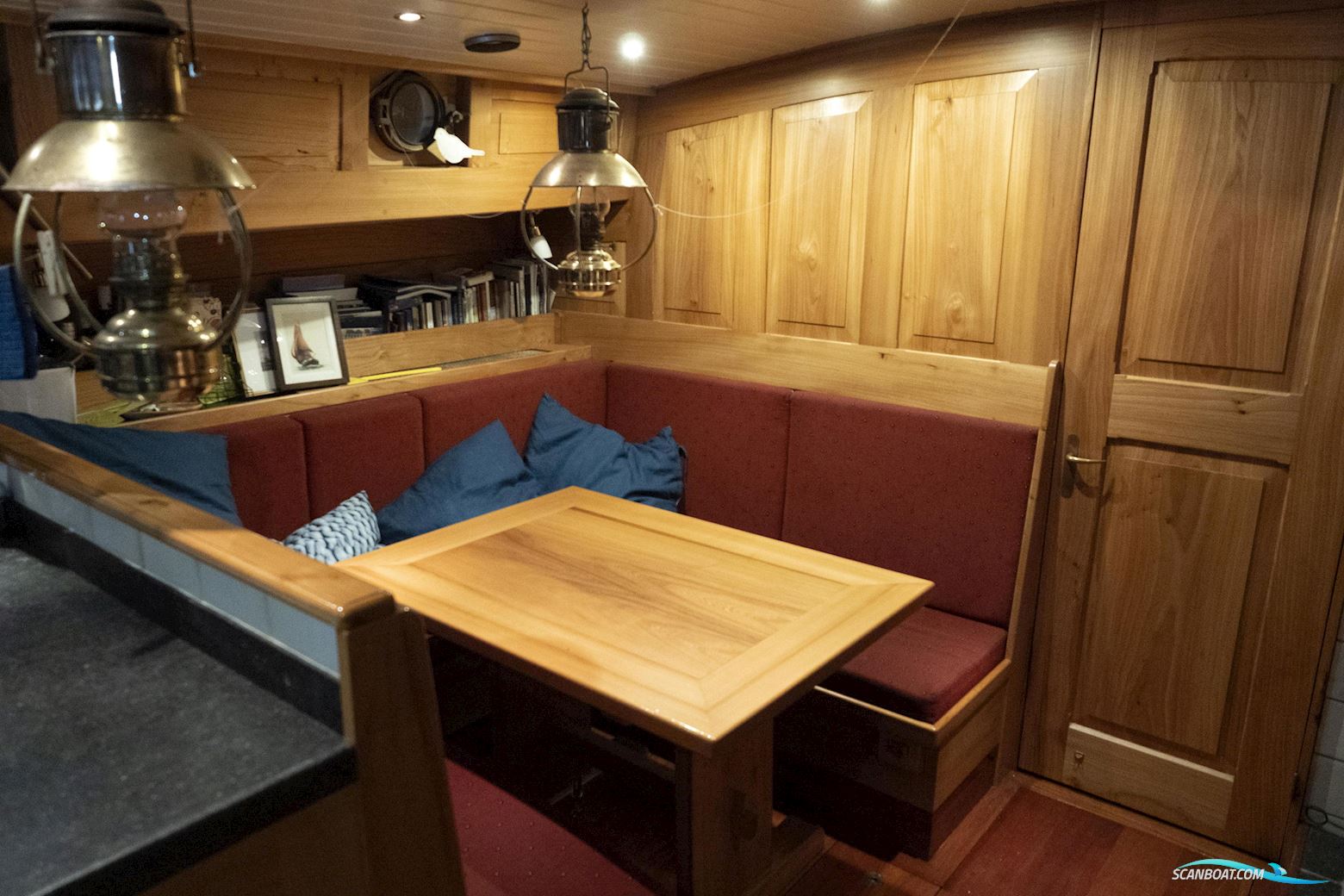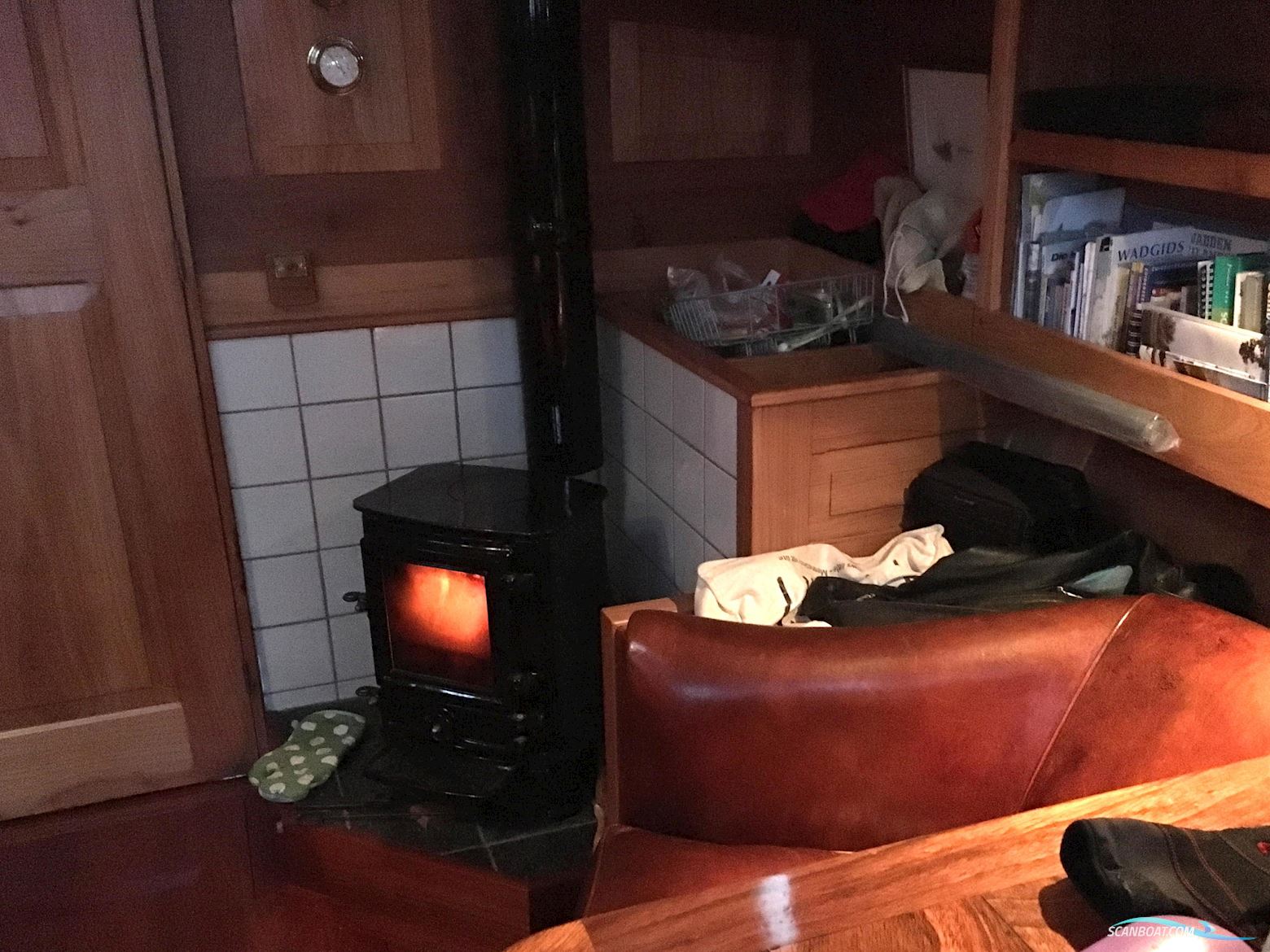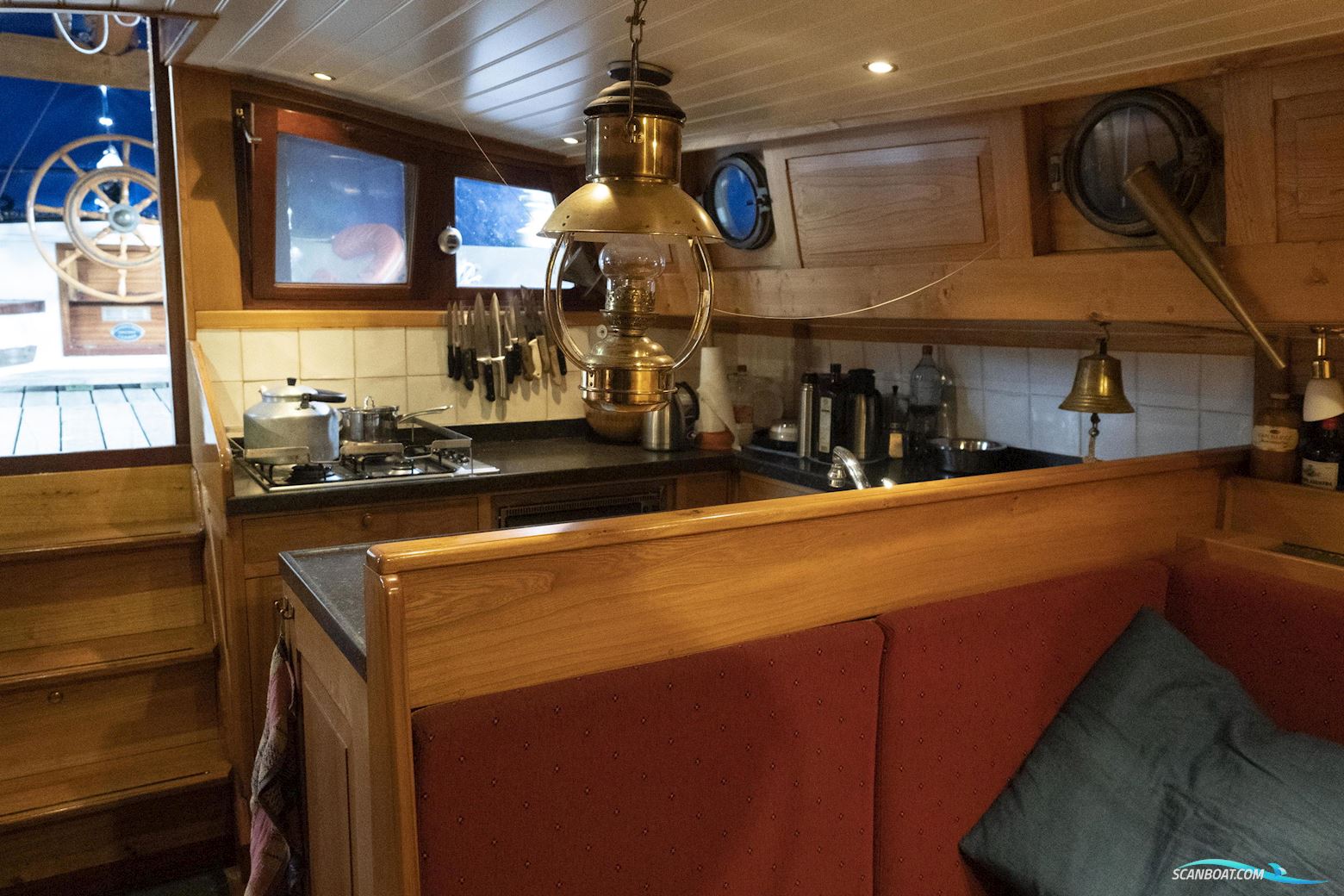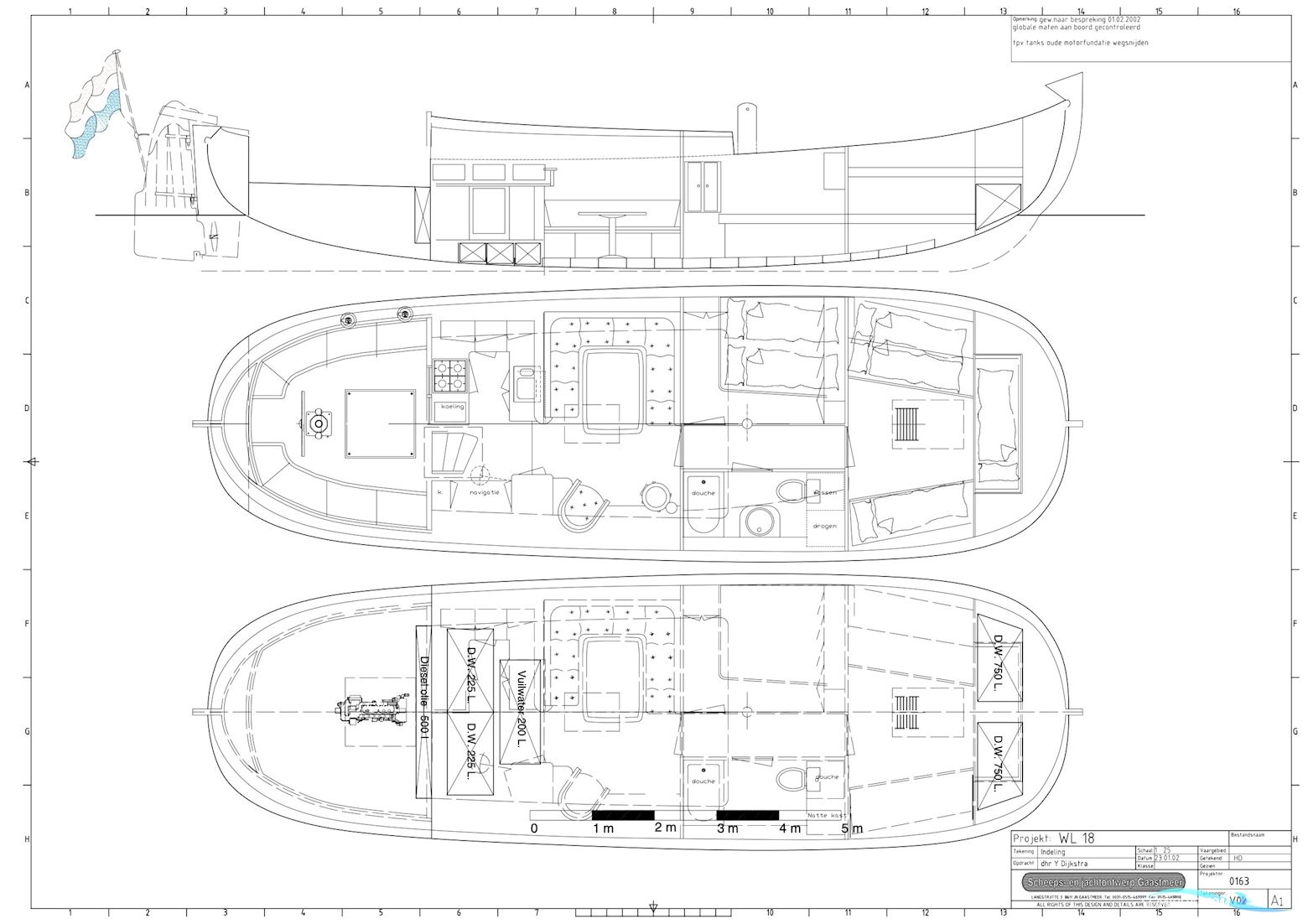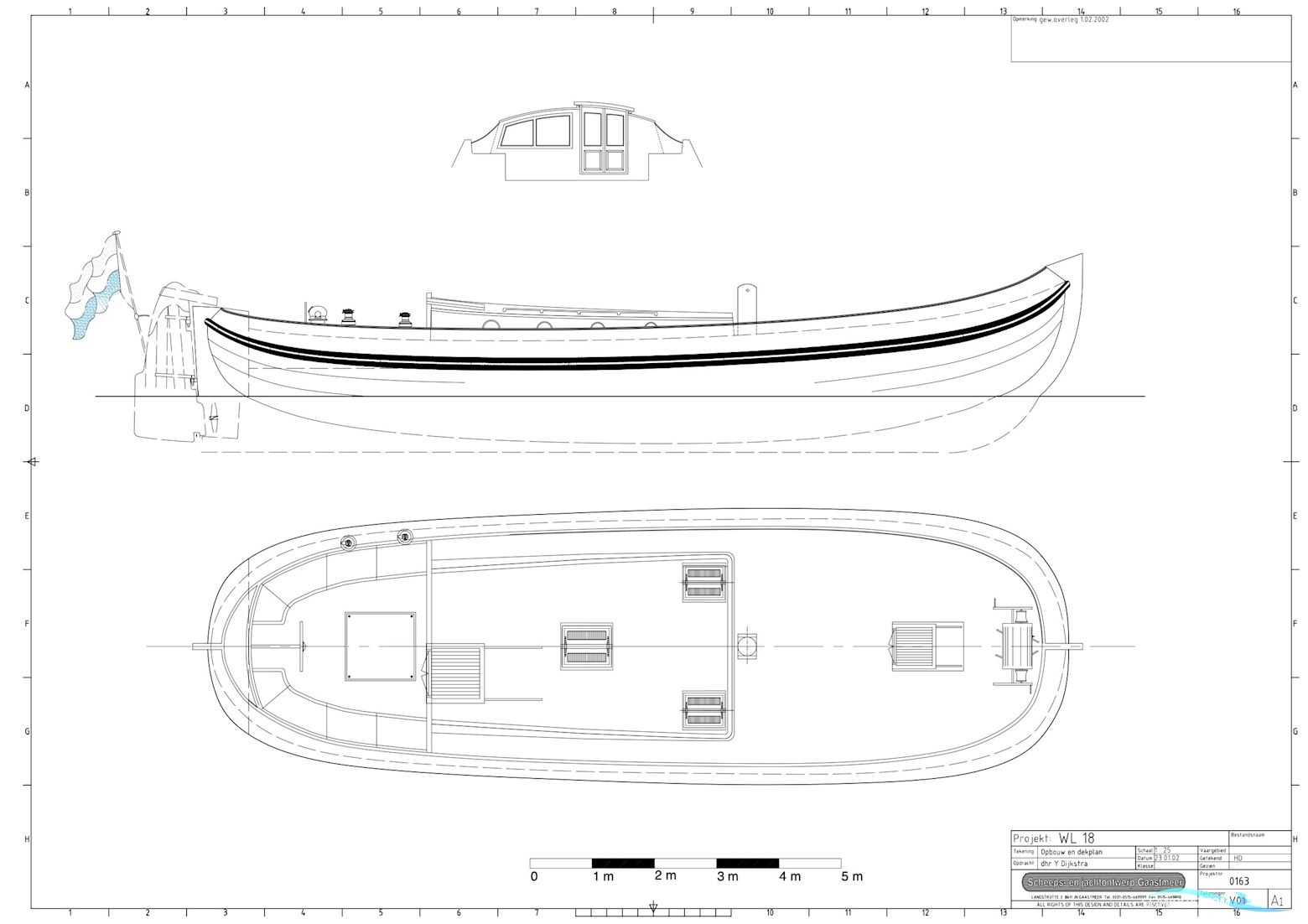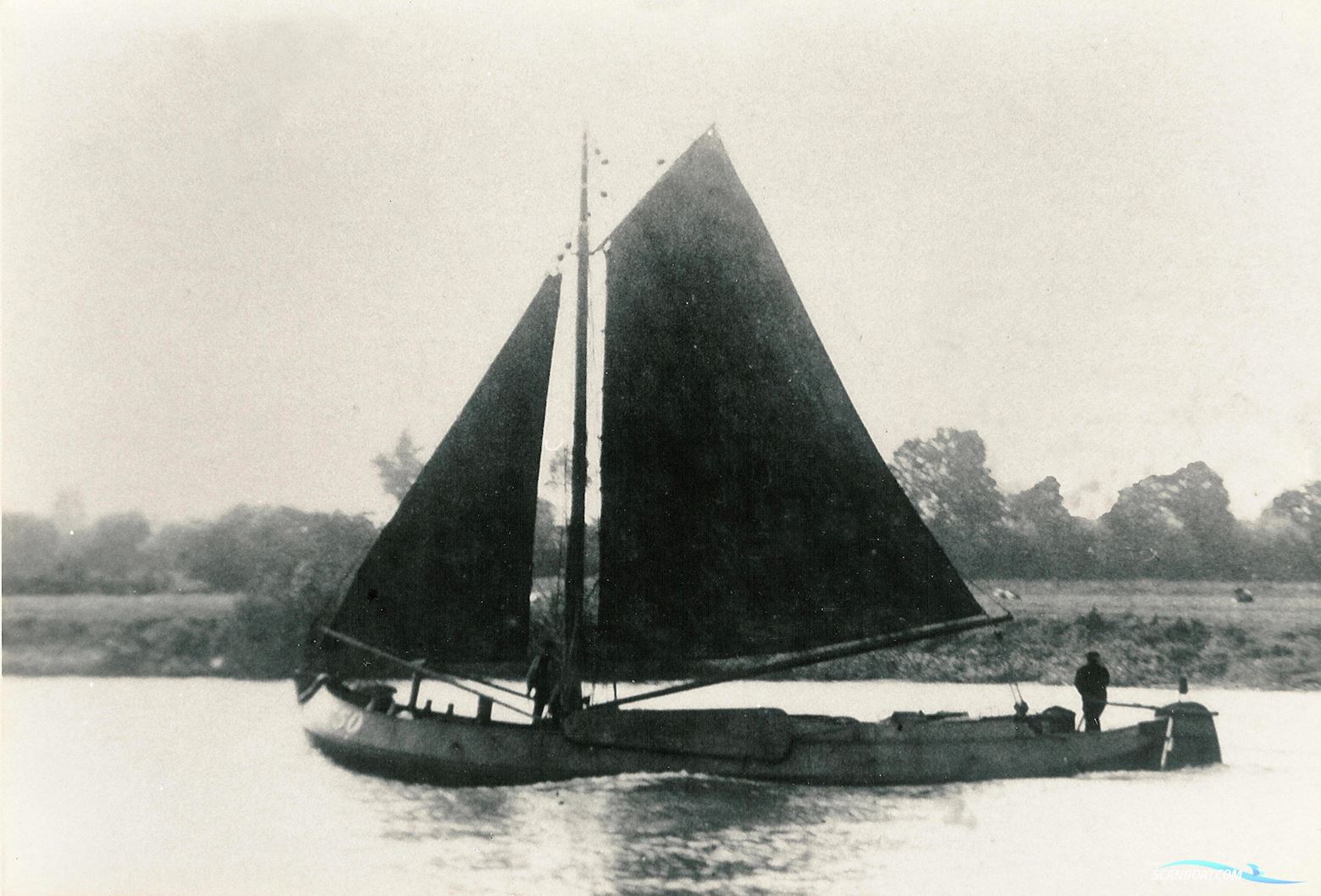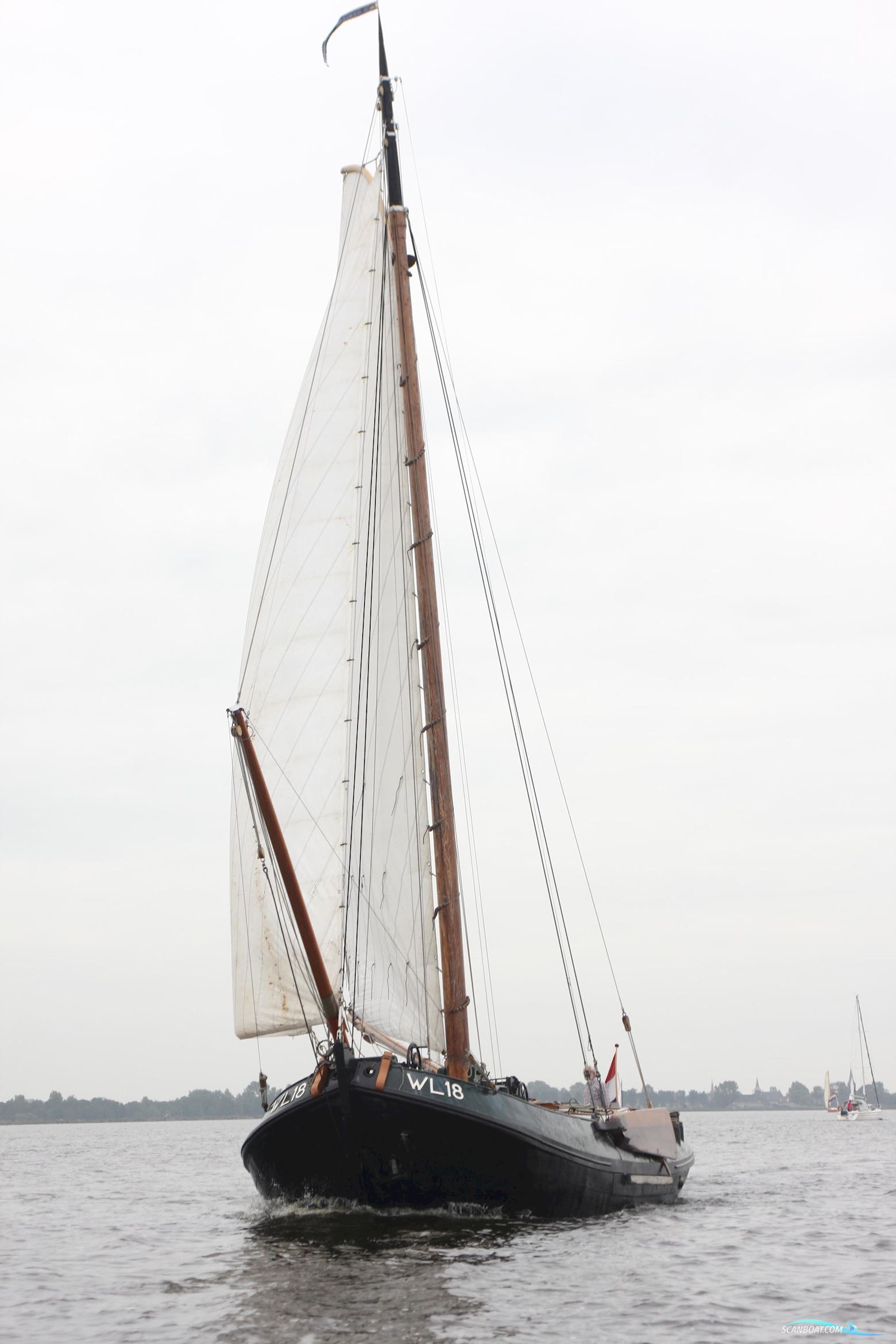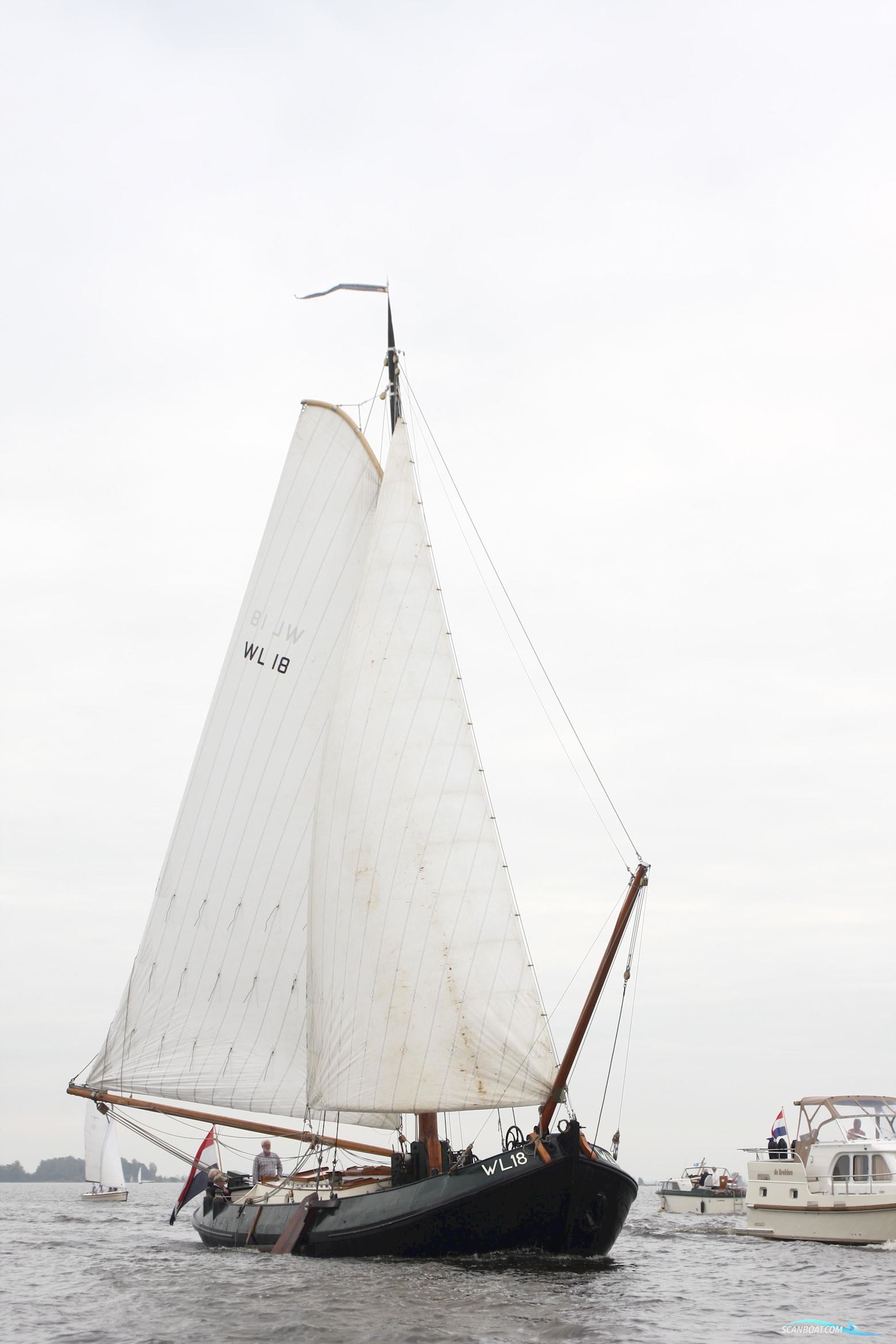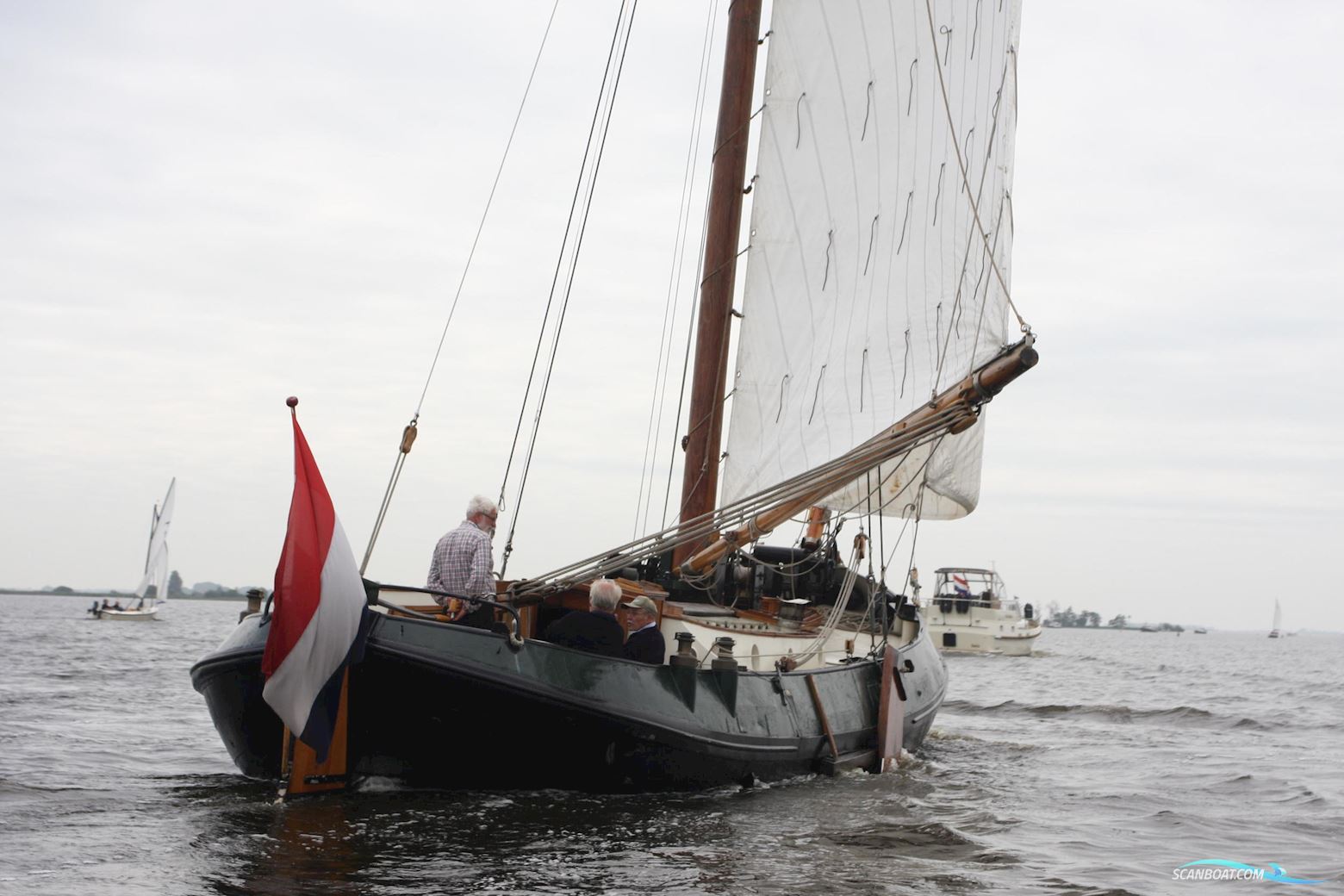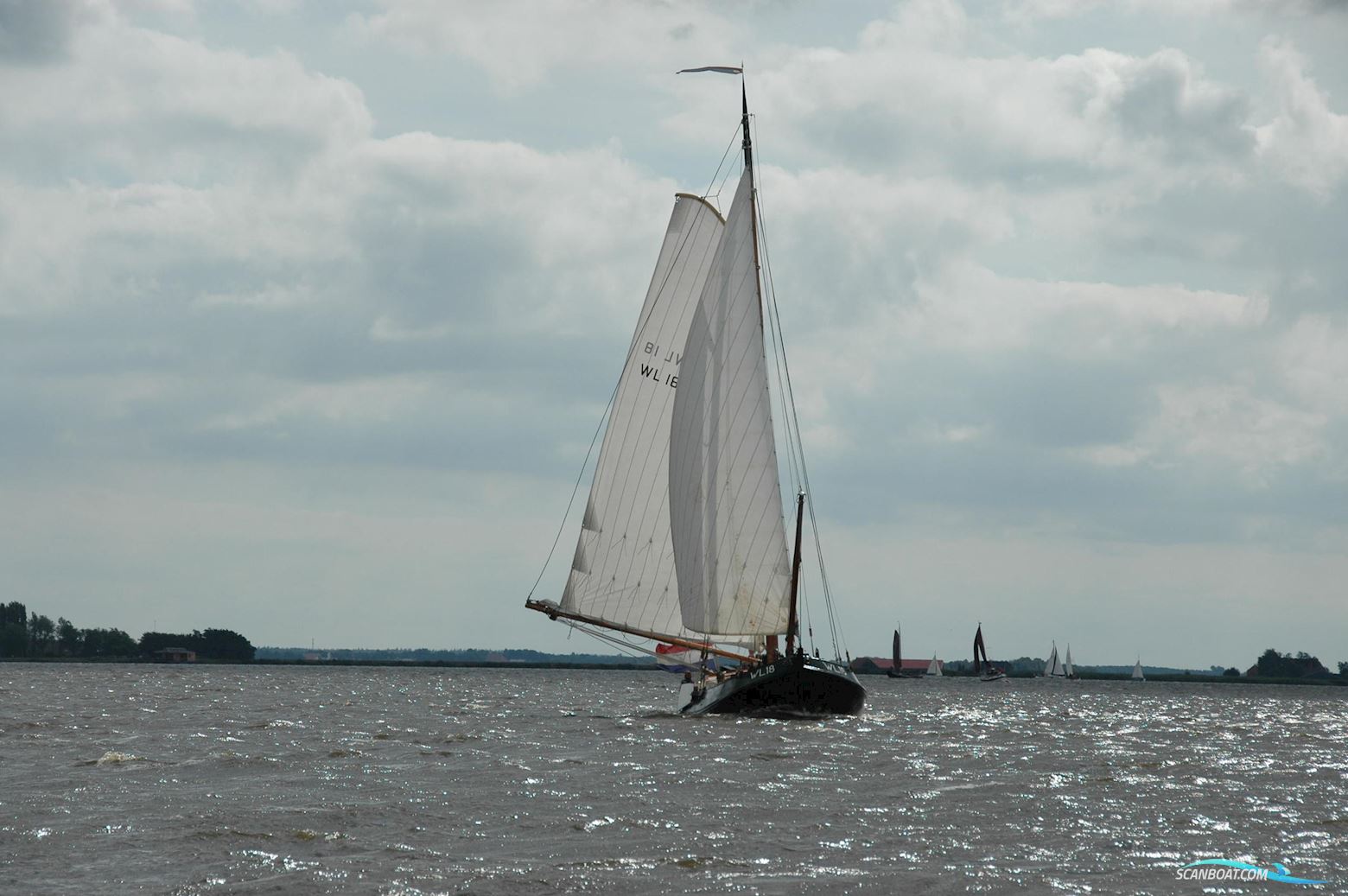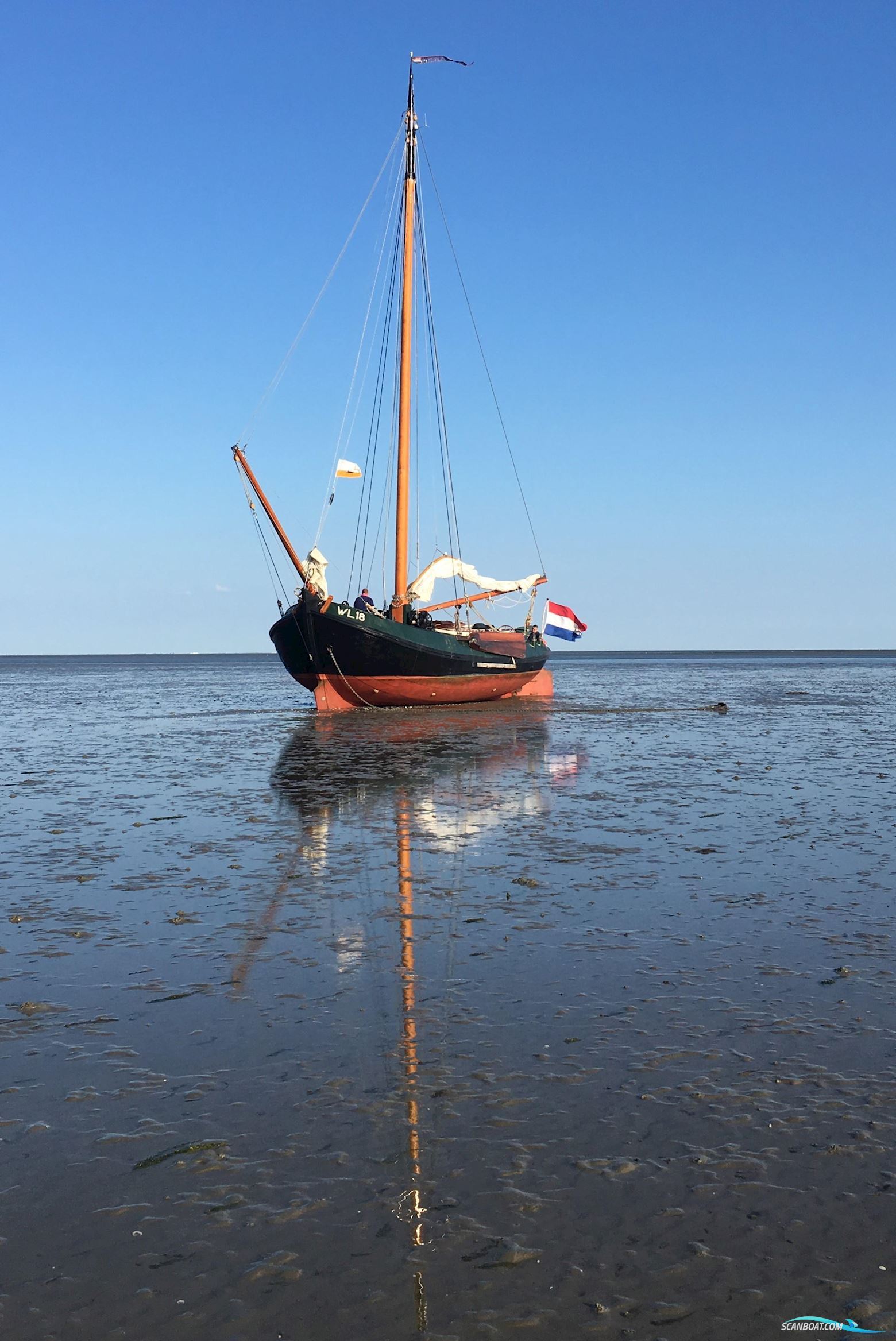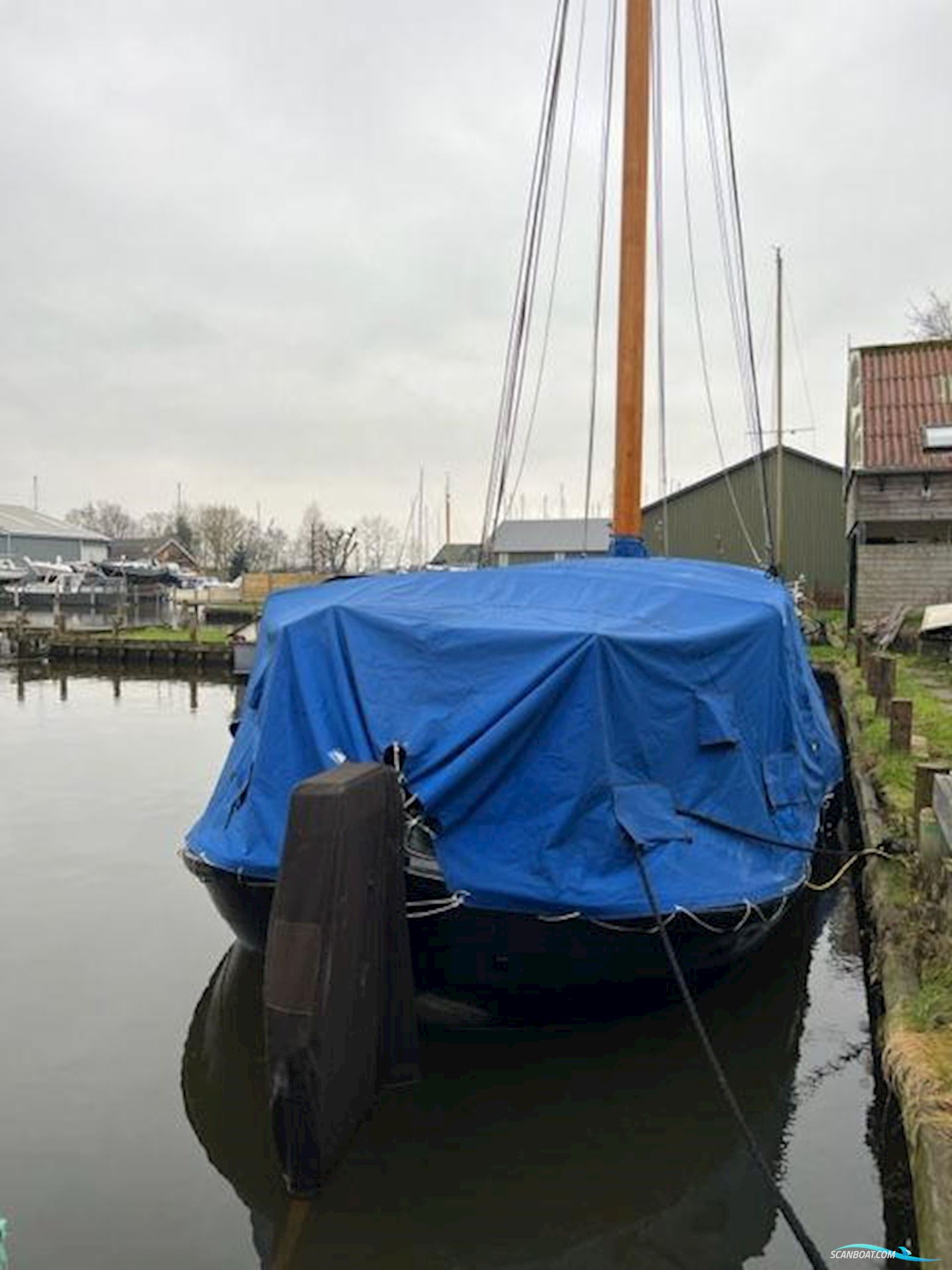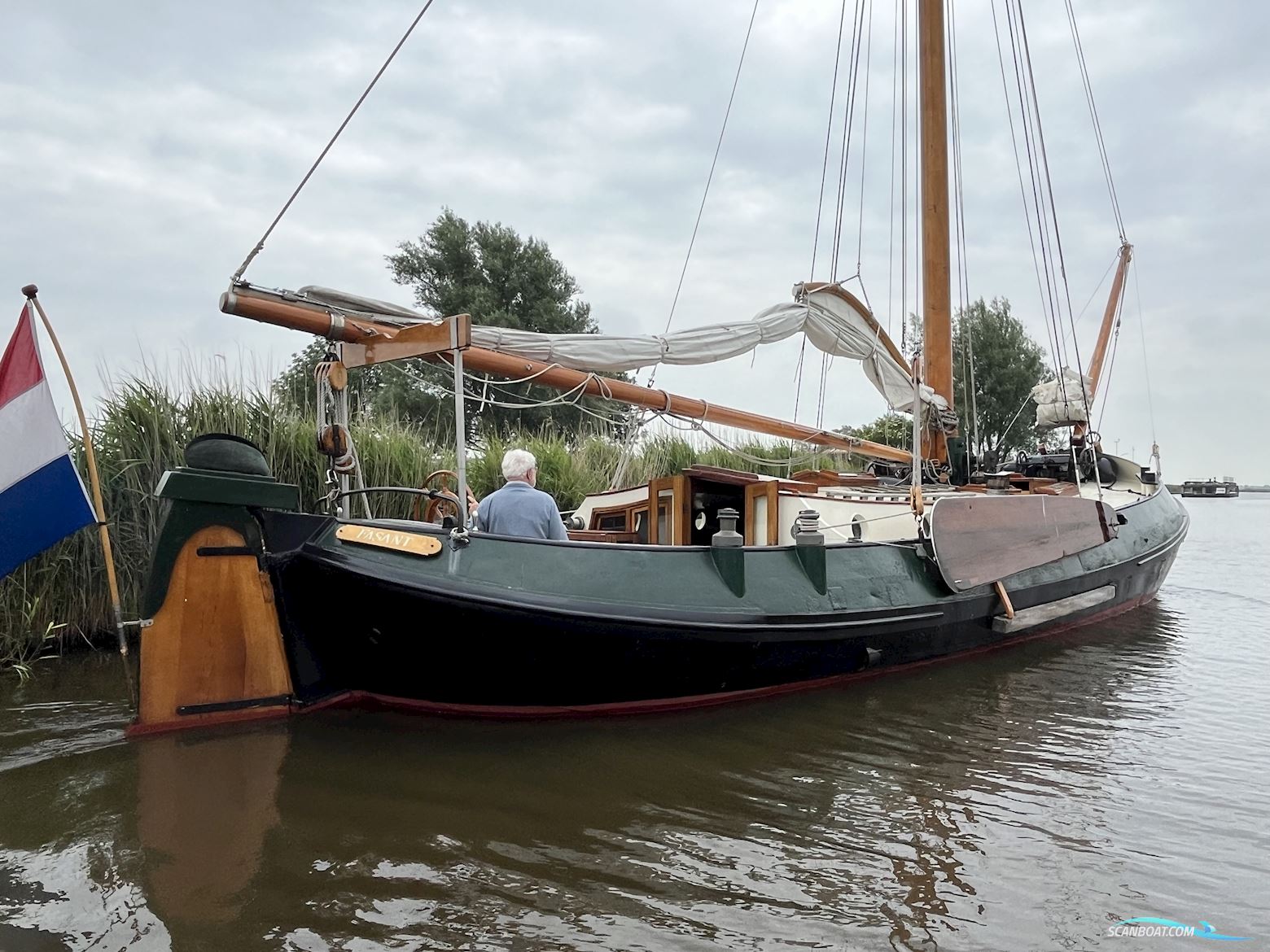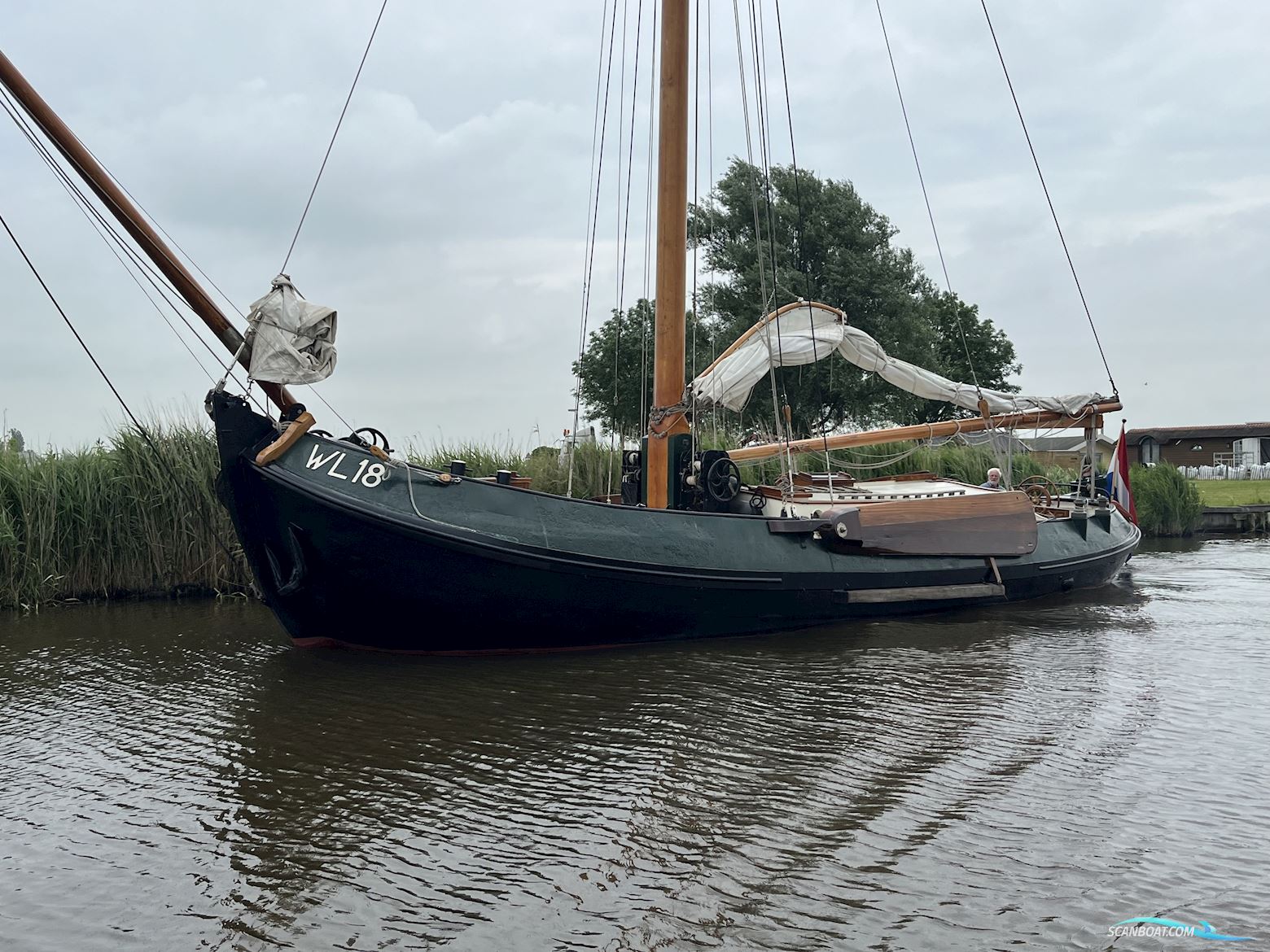WL18 'Fasant'Peter Tolsma and IJsbrand Dijkstra write in the book "The mussel barge WL18 'Fasant', a true "Lemmer yacht" (2020):We know that in 1916/1917 two Zeelanders each ordered a new mussel barge from Gebr. De Boer in Lemmer. They are both fishermen who, besides using the ships for mussel farming in Zeeland itself, particularly want to use them for harvesting mussel seed in the Wadden Sea and then transport it quickly to their mussel plots in Zeeland.The fishermen in question are: P. Verschraegen. He orders the 'Fasant', referred to in the shipyard book as a motor barge with yard number 173, and the Gebroeders Schot. They have the motor fishing barge 'Maria Cristina' built with yard number 176.The research into the origin is extensively described in the bookIt is interesting to see that thanks to a lot of research, the client and the transition of ship owners over time could be clearly determined. Also, the first name and the definitive construction date of the ship have now become clear. This was made possible by various sources, the shipyard book, fisheries register, ship cadastre, and Kromhout register.The name was: 'Fasant' and the year of construction 1916. Sometimes this name is spelled differently as Fazant, but in the Zeeland Fisheries Register it is clearly spelled with an "s". Therefore, IJsbrand and Alda give the ship its original name FASANT back in 2020, alongside the fishing number WL18.The Mussel BargeA mussel barge is a slightly wider and fuller aft Lemsteraak, slightly less deep-draft than the other Lemsteraken, specially designed for transporting mussel seed and mussels from the Zuiderzee and the Wadden Sea to Zeeland. A number of Zeeland fishermen made these trips annually to be able to sow that seed in their own plots in Zeeland. There, the mussels grew further and, after being watered several times, were harvested and traded. The Lemster mussel barge turned out to be a fast sailor and a very manageable ship compared to the Hengsten and Hoogaarsen, which were the usual Zeeland fishing vessels referred to as 'Lemmer yachts'.Based on the fact that a significant number of these ships were in Bruinisse, they were also referred to as 'Bruinisse yachts'. The word yacht here is derived from the old-fashioned meaning of 'hunting', which had the meaning of 'sailing fast'. According to reports, it saved the fishermen, who sailed to and from the Wadden Sea from Zeeland, a full day to complete this journey. And of course, this speed was important for taking the mussels to the market. It is no wonder that a significant number of Zeelanders ordered a mussel barge from De Boer in Lemmer, Stapel in Enkhuizen, Appelo in Zwartsluis, and Van Goor in Kampen. In Zeeland itself, as a result of these barges, the idea arose among shipbuilders to equip their own ships, suitable for it, with a similar stern. This is how the Lemmer hengst was created.
WL18 'Fasant'Peter Tolsma og IJsbrand Dijkstra skriver i bogen "Mosselaak WL18 'Fasant', en ægte "Lemmerjacht" (2020):Vi ved, at i 1916/1917 bestilte to personer fra Zeeland hver en ny mosselaak hos Gebr. De Boer i Lemmer. Begge er fiskere, der ud over at bruge skibene til muslingeavl i Zeeland selv, især vil bruge dem til at fange muslingesæd på Vadehavet for derefter hurtigt at transportere dem til deres muslingeparceler i Zeeland.De involverede fiskere er: P. Verschraegen. Han bestiller 'Fasant', angivet i værftsregistret som en motoraak med værftsnummer 173, og Gebroeders Schot. De får bygget motorfiskeskaen 'Maria Cristina' med værftsnummer 176.Efterforskningen af skibets oprindelse er udførligt beskrevet i bogenDet er interessant at se, at takket være omfattende efterforskning kunne ordregiveren og skibsejernes overgang over tid entydigt fastlægges. Også skibets første navn og endelige bygningsdato er nu blevet klart. Dette var muligt takket være forskellige kilder såsom værftsregistret, fiskeriregisteret, skibskadasteret og Kromhoutregistret.Navnet var: 'Fasant' og byggeåret 1916. Nogle gange staves dette navn anderledes som Fazant, men i det zeelandske fiskeriregister står det tydeligt med et "s". Derfor giver IJsbrand og Alda skibet i 2020, ud over fiskeriregistreringsnummeret WL18, dets oprindelige navn FASANT tilbage.Mosselaaken mosselaak er en lidt bredere og bagtil mere fyldig Lemsteraak, lidt mindre dybgående end de andre Lemsteraken, specielt indrettet til transport af muslingesæd og muslinger fra Zuiderzee og Vadehavet til Zeeland. En række zeelandske fiskere foretog disse ture årligt for at kunne udsætte sæden i deres egne perceler i Zeeland. Her voksede muslingen videre og blev efter flere vandinger høstet og handlet. Det viste sig, at Lemster mosselaaken var en hurtig sejler og et meget håndterbart skib i forhold til Hengsten og Hoogaarsen, som var de sædvanlige zeelandske fiskerskibe kaldet 'Lemmerjachten'.På baggrund af at der var et stort antal af disse skibe i Bruinisse, blev der også talt om 'Bruinisser jachten'. Ordet jagt er her afledt af 'jagen' i den gamle betydning, som havde betydningen 'at sejle hurtigt'. Ifølge sigende sparer det fiskerne, der sejlede til og fra Vadehavet fra Zeeland, en hel dag at fuldføre denne rejse. Og selvfølgelig var denne hastighed også vigtig for at bringe muslingerne til markedet. Ikke underligt, at et stort antal zeelændere bestilte en mosselaak hos De Boer i Lemmer, Stapel i Enkhuizen, Appelo i Zwartsluis og Van Goor i Kampen. I Zeeland selv opstod tanken blandt skibsbyggere om at forsyne deres egne skibe, der var egnet til det, med en lignende bagende. Således opstod bl.a. Lemmerhengsten.
WL18 'Fasant'Peter Tolsma och IJsbrand Dijkstra skriver i boken "Mosselaak WL18 'Fasant', en äkta "Lemmerjacht" (2020):Vi vet att år 1916/1917 beställde två Zeeländare varsin ny mosselaak från Gebr. De Boer i Lemmer. Det är båda fiskare som, förutom för musselodling i Zeeland självt, främst vill använda fartygen för att fånga musselägg på Vadehavet för att sedan använda dem för snabb transport till sina musselområden i Zeeland.De fiskare som är inblandade är: P. Verschraegen. Han beställer 'Fasant', som i varvets bok betecknas som en motorbåt med varvsnummer 173 och Gebroeders Schot. De låter bygga motorfiskebåten 'Maria Cristina' med varvsnummer 176.Undersökningen om ursprunget beskrivs utförligt i bokenDet är roligt att se att tack vare mycket undersökning har beställaren och ägarövergången över tiden kunnat fastställas entydigt. Även det första namnet och det slutgiltiga byggdatumet för fartyget har nu blivit tydligt. Detta var möjligt tack vare olika källor, varvets bok, fiskeregister, skeppsregister och Kromhoutregister.Namnet var: 'Fasant' och byggåret 1916. Ibland stavas detta namn annorlunda som Fazant, men i Zeeländska Fiskeregistret står det tydligt med ett "s". Därför återger IJsbrand och Alda fartyget 2020, förutom fiskeregisternumret WL18, dess ursprungliga namn FASANT.MosselaakEn mosselaak är en något bredare och bakre Lemsteraak, något mindre djupgående än de andra Lemsteraken, speciellt utformad för transport av musselägg och musslor från Zuiderzee och Vadehavet till Zeeland. Ett antal Zeeländska fiskare gjorde dessa resor varje år för att kunna plantera ut äggen på sina egna områden i Zeeland. Där växte musslorna och efter att ha vattnats ett antal gånger skördades de och såldes. Den Lemsterska mosselaaken visade sig vara en snabb seglare och ett mycket hanterbart fartyg jämfört med Hengsten och Hoogaarsen som var de vanliga Zeeländska fiskarfartygen kallade 'Lemmerjachten'.På grund av att det fanns ett stort antal av dessa fartyg i Bruinisse talades det också om 'Bruinisser jachten'. Ordet jakt härstammar från den gamla betydelsen av 'jagen', vilket hade betydelsen 'snabb segling'. Enligt uppgifter sparade fiskarna, som seglade till och från Vadehavet från Zeeland, en hel dag på denna resa. Och naturligtvis var denna hastighet också viktig för att ta musslorna till marknaden. Inte konstigt att ett stort antal Zeeländare beställde en mosselaak från De Boer i Lemmer, Stapel i Enkhuizen, Appelo i Zwartsluis och Van Goor i Kampen. I Zeeland självt började tanken hos skeppsbyggare att förse sina egna fartyg, som var lämpliga för detta, med en liknande akter. Så uppstod bland annat Lemmerhengst.
WL18 'Fasant'Peter Tolsma en IJsbrand Dijkstra schrijven in het boek "De mosselaak WL18 'Fasant', een echt "Lemmerjacht" (2020):We weten dat in 1916/1917 twee Zeeuwen elk een nieuwe mosselaak bestelden bij Gebr. De Boer in Lemmer. Het zijn beiden vissers die de schepen, behalve voor de mosselteelt in Zeeland zelf, met name willen gebruiken voor de vangst van mosselzaad op de Waddenzee om ze daarna in te zetten voor snel transport naar hun mosselpercelen in Zeeland.De vissers in kwestie zijn: P. Verschraegen. Hij bestelt de 'Fasant', aangeduid in het werfboek als motoraak met werfnummer 173 en de Gebroeders Schot. Zij laten de motorvischaak 'Maria Cristina' bouwen met werfnummer 176.Het speurwerk naar de herkomst wordt uitgebreid beschreven in het boekHet is leuk om te zien dat dankzij veel speurwerk, eenduidig de opdrachtgever en de overgang van scheepseigenaren in de loop der tijd kon worden vastgesteld. Ook is nu de eerste naam en de definitieve bouwdatum van het schip daardoor duidelijk geworden. Uit de verschillende bronnen was dit mogelijk, het werfboek, visserijregister, scheepskadaster en Kromhoutregister.De naam was: 'Fasant' en het bouwjaar 1916. Soms wordt deze naam anders gespeld Fazant, maar in het Zeeuwse Visserijregister staat het duidelijk met een "s". Daarom geven IJsbrand en Alda het schip in 2020, naast het visserijnummer WL18, haar oorspronkelijke naam FASANT terug.De MosselaakEen mosselaak is een wat bredere en achter wat vollere Lemsteraak, iets minder diepstekend dan de andere Lemsteraken, speciaal ingericht voor het vervoer van mosselzaad en mosselen van de Zuiderzee en de Waddenzee naar Zeeland. Een aantal Zeeuwse vissers maakte jaarlijks die tochten, om dat zaad in haar eigen percelen in Zeeland weer uit te kunnen zetten. Daar groeide de mossel verder en werd, na een aantal keren te zijn verwaterd, geoogst en verhandeld. De Lemster mosselaak bleek een snelle zeiler en een zeer hanteerbaar schip in vergelijking met de Hengsten en Hoogaarsen die de gebruikelijke Zeeuwse vissersschepen wel `Lemmerjachten'.Op grond van het feit dat er een flink aantal van deze schepen in Bruinisse lag, werd er ook wel over 'Bruinisser jachten' gesproken. Het woord jacht is hier in de oud-vaderlandse betekenis afgeleid van 'jagen' hetgeen `snel varen' als betekenis had. Volgens zeggen scheelde het de vissers, die naar de Waddenzee en terug voeren vanuit Zeeland ,een volle dag om deze reis te volbrengen. En ook voor het naar de markt brengen van mosselen was die snelheid natuurlijk belangrijk. Geen wonder dus dat een flink aantal Zeeuwen bij De Boer in Lemmer, Stapel in Enkhuizen, Appelo te Zwartsluis en Van Goor in Kampen een mosselaak bestelden. In Zeeland zelf kwam naar aanleiding van deze aken bij scheepsbouwers de gedachte op om hun eigen schepen, die daar geschikt voor waren, van een soortgelijke kont te voorzien. Zo ontstond o.a. de Lemmerhengst.
WL18 'Fasant'Peter Tolsma und IJsbrand Dijkstra schreiben in ihrem Buch "Die Mosselaak WL18 'Fasant', ein echtes "Lemmerjacht" (2020):Wir wissen, dass im Jahr 1916/1917 zwei Seemänner jeweils eine neue Mosselaak bei Gebr. De Boer in Lemmer bestellten. Es handelt sich um Fischer, die die Schiffe nicht nur für die Muschelzucht in Zeeland selbst, sondern vor allem für die Muschelsamenernte auf dem Wattenmeer nutzen wollen, um sie dann schnell zu ihren Muschelgrundstücken in Zeeland zu transportieren.Die betreffenden Fischer sind: P. Verschraegen. Er bestellt die 'Fasant', im Werftbuch als Motoraak mit der Werftnummer 173 bezeichnet, und die Gebroeders Schot. Sie lassen die Motorvischaak 'Maria Cristina' mit der Werftnummer 176 bauen.Die Recherche zur Herkunft wird im Buch ausführlich beschriebenEs ist interessant zu sehen, dass dank intensiver Recherche eindeutig der Auftraggeber und der Wechsel der Schiffseigentümer im Laufe der Zeit festgestellt werden konnten. Auch der erste Name und das endgültige Baujahr des Schiffes sind nun klar. Dies war durch verschiedene Quellen möglich, das Werftbuch, das Fischereiregister, das Schiffsregister und das Kromhoutregister.Der Name war: 'Fasant' und das Baujahr 1916. Manchmal wird dieser Name anders geschrieben, Fazant, aber im Zeeländischen Fischereiregister steht er eindeutig mit einem "s". Deshalb geben IJsbrand und Alda dem Schiff im Jahr 2020 neben der Fischereinummer WL18 seinen ursprünglichen Namen FASANT zurück.Die MosselaakEin Mosselaak ist eine etwas breitere und hinten etwas vollere Lemsteraak, etwas weniger tiefgehend als die anderen Lemsteraken, speziell für den Transport von Muschelsamen und Muscheln von der Zuiderzee und dem Wattenmeer nach Zeeland eingerichtet. Einige Seemänner aus Zeeland machten diese Reisen jedes Jahr, um den Samen in ihren eigenen Grundstücken in Zeeland wieder aussäen zu können. Dort wuchsen die Muscheln weiter und wurden nach mehreren Wässerungen geerntet und gehandelt. Die Lemster Mosselaak erwies sich als schneller Segler und als sehr handhabbares Schiff im Vergleich zu den Hengsten und Hoogaarsen, die die üblichen Zeeuwse Fischerboote waren, auch 'Lemmerjachten' genannt.Aufgrund der Tatsache, dass eine beträchtliche Anzahl dieser Schiffe in Bruinisse lag, wurde auch von 'Bruinisser jachten' gesprochen. Das Wort Jacht leitet sich hier in der alten Bedeutung von 'jagen' ab, was 'schnelles Segeln' bedeutete. Angeblich sparten die Fischer, die von Zeeland aus zur Waddenzee und zurück segelten, einen ganzen Tag auf dieser Reise. Und auch für den Transport der Muscheln zum Markt war diese Geschwindigkeit natürlich wichtig. Kein Wunder also, dass eine beträchtliche Anzahl von Zeeländern bei De Boer in Lemmer, Stapel in Enkhuizen, Appelo in Zwartsluis und Van Goor in Kampen eine Mosselaak bestellten. In Zeeland selbst entstand aufgrund dieser Aken bei Schiffsbauern die Idee, ihre eigenen Schiffe, die dafür geeignet waren, mit einem ähnlichen Heck auszustatten. So entstand unter anderem der Lemmerhengst.



